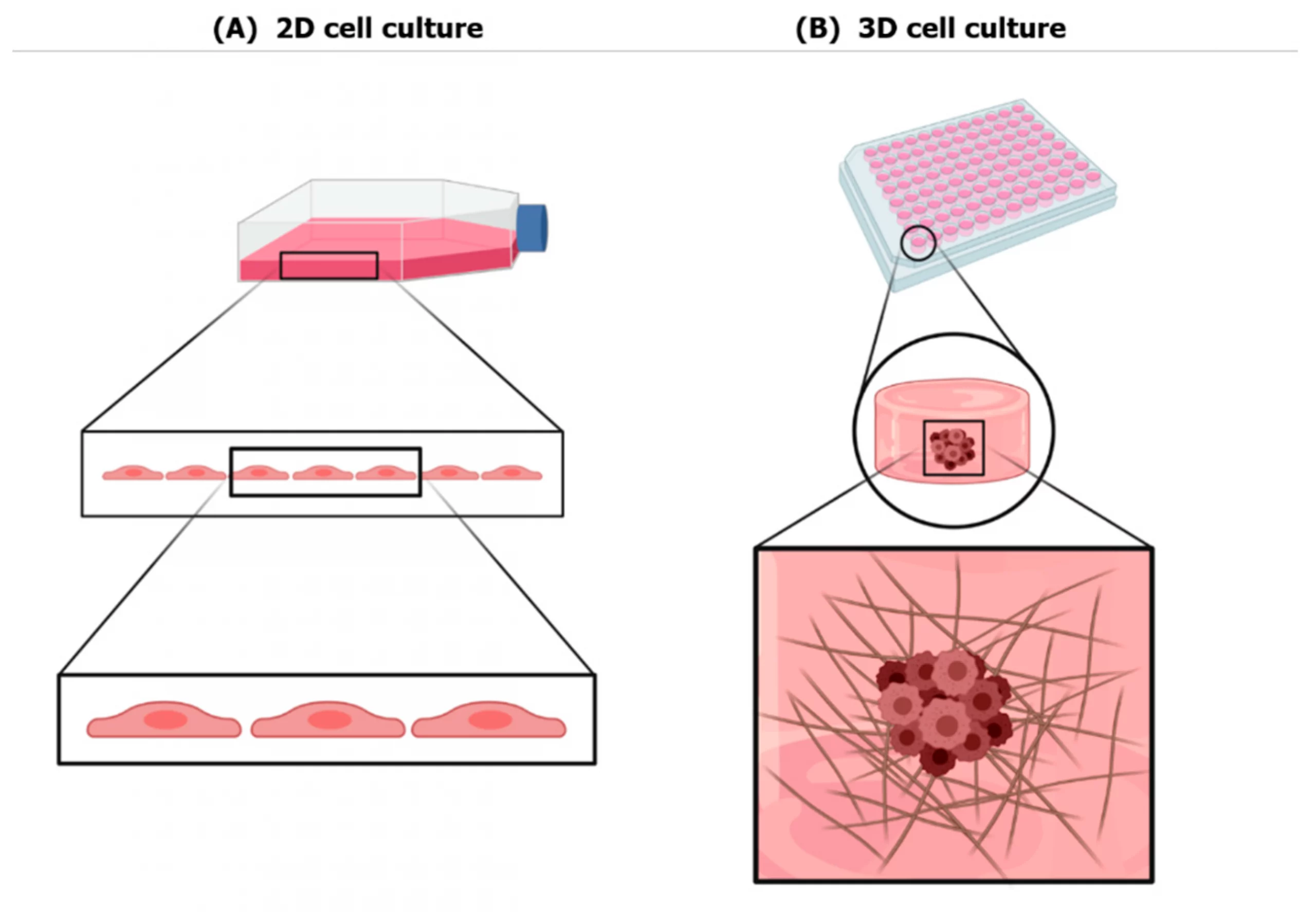
The Superiority of Three-Dimensional over Two-Dimensional Cell Culture in Tumor Research
Three-dimensional (3D) cell culture technology has become one of the main focuses of tumor cell biology, using its various methods and materials to mimic the in vivo microenvironment of tumor cells cultured ex vivo. 3D culture techniques promise to be a bridge between traditional 2D culture and animal experiments and have become the next frontier of cell biology research. Even though, so many cancer model systems exist, more than 90% of promising preclinical drugs, fail to go beyond clinical phases, not only wasting time and money but also delaying the discovery of successful interventions (1,2).
Why 2D cell culture and animal models fail
Cancer cell lines derived from human and animal tumors grown as flat monolayers are the most simplistic cancer models. In this dimension, cells are adhering to an artificial plastic or glass surface, limiting contact with other cells. Oxygen, nutrient, and waste products are also diffusing differently compared to tissue.
This setup of growing cells in flat layers on plastic surfaces does not reflect the dynamic multicellular microenvironment found in the body. Immortalized tumor lines grown in 2D culture have a 95% drug failure rate (3), and they have proven a poor drug development model. Drug testing in animal models has also failed to develop into therapies that translate to improved outcomes for human disease (1,3,4). Moreover, there are many forms of deadly tumors currently lacking a qualified animal model including brain, kidney, and skin (5).
3D culture displays a more realistic approach to tumor research
Growing cells in 3D influences proliferation and cell morphology. Cancer cells grown in 3D induce zones of differential proliferation, with cell division occurring faster on the outside of the spheroid (6) as compared to cancer cells grown as a monolayer. 3D culture has the potential to be used to study tumor morphology and to understand differences between tumors that arise in different organs and tissues. Cells grown in 3D cultures have divergent gene expression patterns when compared to the exact same cells grown as a monolayer (7).
3D cancer models also enable to experimental manipulation of each component of the tumor microenvironment to try and understand the drivers of cancer as a disease state. Cancer-associated fibroblasts (CAFs) have an important role in disease progression and tumor microenvironment. Considering how CAFs influence tumor proliferation and are the emerging targets for combinatorial drug therapies for cancer, the cancer 3D model can increase the understanding of their role in tumor progression, uncover new potential therapies, and speed up the drug discovery process (8).
3D cancer models, therefore, are more likely to accurately represent the tumor microenvironment and save time and money by generating more significantly realistic results for the important clinical phases.
References
1. Aggarwal BB, Danda D, Gupta S, Gehlot P. Models for prevention and treatment of cancer: problems vs promises. Biochem Pharmacol. 2009 Nov 1;78(9):1083-94. doi: 10.1016/j.bcp.2009.05.027. Epub 2009 May 27. PMID: 19481061; PMCID: PMC2748136.
2. van der Worp HB, Howells DW, Sena ES, Porritt MJ, Rewell S, O’Collins V, Macleod MR. Can animal models of disease reliably inform human studies? PLoS Med. 2010 Mar 30;7(3):e1000245. doi: 10.1371/journal.pmed.1000245. PMID: 20361020; PMCID: PMC2846855.
3. Hutchinson L, Kirk R. High drug attrition rates–where are we going wrong? Nat Rev Clin Oncol. 2011 Mar 30;8(4):189-90. doi: 10.1038/nrclinonc.2011.34. PMID: 21448176.
4. Hait WN. Anticancer drug development: the grand challenges. Nat Rev Drug Discov. 2010 Apr;9(4):253-4. doi: 10.1038/nrd3144. PMID: 20369394.
5. Steele VE, Lubet RA. The use of animal models for cancer chemoprevention drug development. Semin Oncol. 2010 Aug;37(4):327-38. doi: 10.1053/j.seminoncol.2010.05.010. PMID: 20816503; PMCID: PMC2935905.
6. Lin RZ, Chang HY. Recent advances in three-dimensional multicellular spheroid culture for biomedical research. Biotechnol J. 2008 Oct;3(9-10):1172-84. doi: 10.1002/biot.200700228. Erratum in: Biotechnol J. 2008 Oct;3(9-10):1285. Lin, Ruei-Zhen [corrected to Lin, Ruei-Zeng]. PMID: 18566957.
7. Lee JM, Mhawech-Fauceglia P, Lee N, Parsanian LC, Lin YG, Gayther SA, Lawrenson K. A three-dimensional microenvironment alters protein expression and chemosensitivity of epithelial ovarian cancer cells in vitro. Lab Invest. 2013 May;93(5):528-42. doi: 10.1038/labinvest.2013.41. Epub 2013 Mar 4. PMID: 23459371.
8. Allen M, Louise Jones J. Jekyll and Hyde: the role of the microenvironment on the progression of cancer. J Pathol. 2011 Jan;223(2):162-76. doi: 10.1002/path.2803. Epub 2010 Oct 29. PMID: 21125673.



